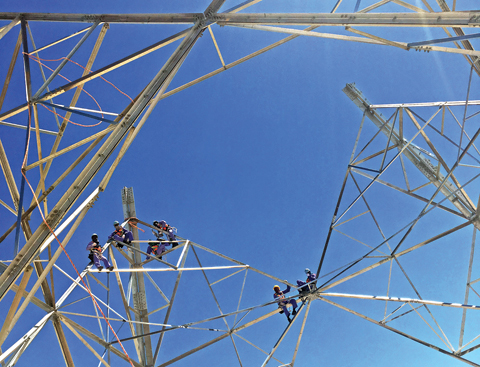 .
.Along the road leading to Wafra farms, gravel scatters from speeding cars and sand accumulates like rising, nude-colored clouds. Herds of goats and camels graze in the desert, behind makeshift mobile stalls selling animal feed and construction material. On the other side, water towers have been built to serve the new Sabah Al-Ahmad residential city, along with pylons to provide electricity to the area.
The installation of electricity pylons requires a high level of aerobic skills - workmen should be able to climb and dangle in the air like circus acrobats. But sometimes, they need to work close to the road, which makes them susceptible to the flying gravel. In fact, this is what happened during my photo shoot. Due to a strong wind lash from a passing truck, my sunglasses were blown from my face, which made me realize that helmets alone are not enough for protection. Workmen have to cover their faces with scarves to shield them from flying debris.
This was the first time I witnessed a pylon installation process. Twelve to 14 men operate on each tower, which are constructed in phases. Initially, the solid concrete bases of the tower are built over two to three days. The construction period of each tower differs - however, the contractors have to complete the entire project according to the deadline.
An American photographer visited Kuwait last year for the first time, and was my guest. On our way to her apartment, she was astounded by these electricity pylons that caught her eye. "They look like combat robots - I wish I had the time to photograph them!" she exclaimed. We neglect the value and the beauty of things around us and take them for granted. When was the last time you tried to look at the world with awe and an eye full of wonder?
By Athoob Al-Shuaibi










